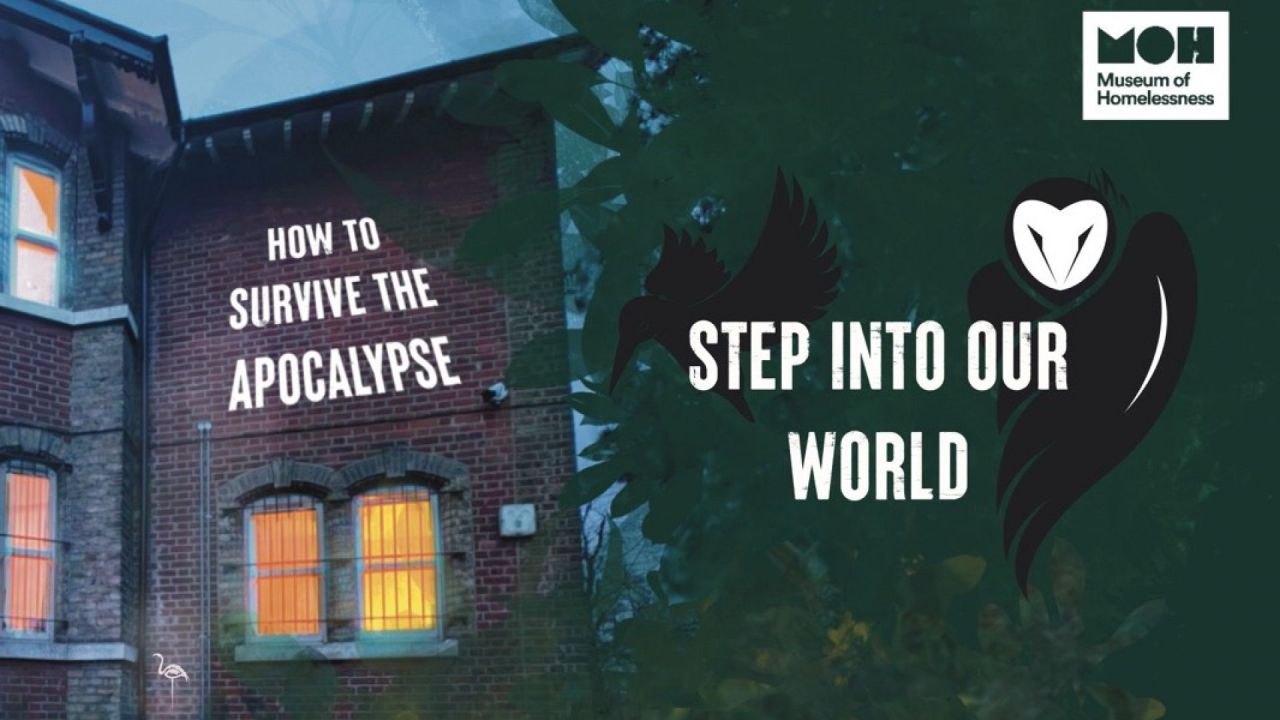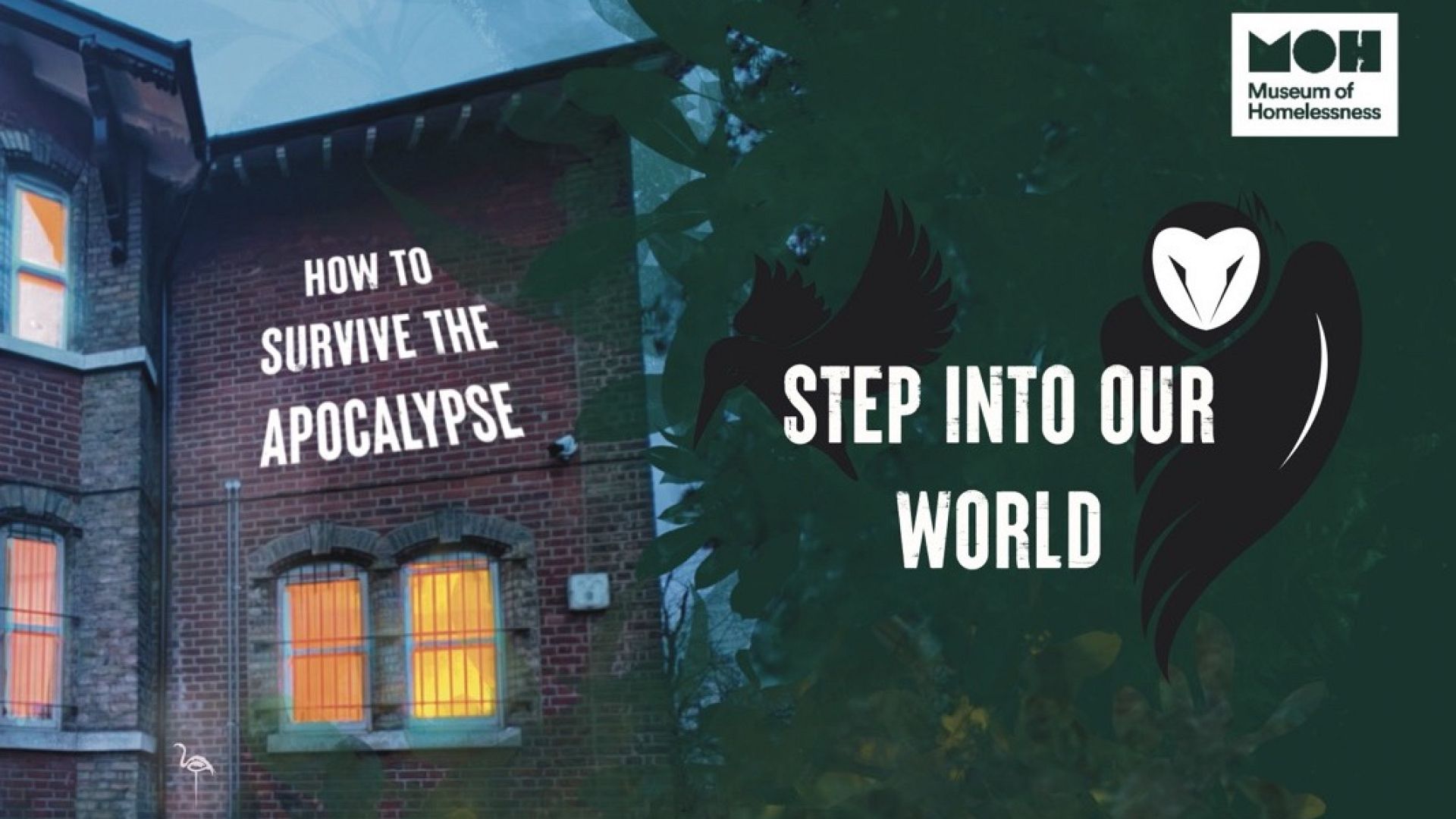I’m sitting in a small, cramped room with 20 other people staring at a stick. Not just any stick, mind: it’s been customised with gaffer tape and paint so it looks like a punk shillelagh. The stick has a range of purposes, says the young black woman giving the presentation: comfort, protection, and its primary purpose, support. She recounts how, disembarking from a bus one night she forgot her crutches, and plucked the stick from a garden. It’s been a source of support ever since.
‘I can’t tell you that. We just call him Man with a Stick’
I’m confused. The young woman doesn’t seem in need of a crutch, nor does she look the type to assault potential assailants with a stick, painted or otherwise. Then I realise the words aren’t her own, but those of the benefactor who generously donated his beloved stick. His long and, frankly, rambling explanation of why the stick was so important was recorded for posterity, and now she is repeating his words for our delectation.
Her talk ended, there was a short silence, then a generous round of applause from those gathered in the room, me included: it can’t be easy repeating a stick monologue being fed into your ear and even harder to make it seem interesting. When the applause dies down I ask another staff member, Lewis, for the name of the stick donor. Lewis – young, tall, dark-skinned with a short beard – frowns.
‘I can’t tell you that. We just call him Man with a Stick.’
Now a young, pretty white woman walks round the room with something in a box. This, she explains (or rather, repeats the explanation being fed through her headset), is cob, apparently the most environmentally sustainable building material known to man. Whole houses are being built with this stuff over by Heathrow somewhere (‘they look like hobbit houses’, smiles the girl, or perhaps her source).
By way of a climax, Lewis slips over his head a black binbag that has been so precious to another donor: because, as is obvious, binbags keep you dry. It seems implausible that the black binbag currently being modelled as a fashion statement by Lewis is the same one the homeless donator wore during his time on the streets. Then, I realise, it’s probably just symbolic. I know you’re supposed to think deeply about this stuff, but I’m just reminded of Viz’s Black Bag, the faithful border bin-liner.
The presentation is at the Museum of Homelessness in a redbrick building at the Manor House end of Finsbury Park. ‘Museum’ is perhaps misleading: admittance can only be gained by booking in advance for an event (currently, How to Survive the Apocalypse: Wisdoms from our Community.) On arrival, I was greeted by a friendly young woman at a trestle table and offered tea, coffee and biscuits. Asking the lady if there is a charge, she smiled. ‘Of course not. You have reached sanctuary.’
This is great news, and I look round the grounds: various homeless-looking builders munch sandwiches as they lay gravel paths and erect raised beds, and behind the building a pond has been constructed to help people suffering from anxiety issues. Apart from an East Asian family, who look somewhat bewildered, fellow visitors are mostly older even than me, in grungy clothes and unkempt hair; I feel quite at home.
The staff, wearing white t-shirts with MOH emblazoned across them, are polite and empathetic to a fault. Having experienced periods of homelessness and insecure housing myself, I had expected something like The League of Gentlemen’s ‘Legz Akimbo’: well-meaning poshos patronising their audience. Instead it is apparent that all who work here have experienced homelessness, if not personally, then at a personal or professional level.
Beneath an awning in the garden, the sun finally merging through June cloud, we are asked if we have an item we would wish to carry in the event we were made homeless. As a young man, the item I carried as I drifted along rainy streets and through smelly underpasses was a can of Tennents Super, which doesn’t seem the correct response so I say nothing. A middle-aged woman sticks up her hand and offers a teddy bear. An older man mutters that he’d been about to say the same thing. A third proposes his bike: no surprise, here in Corbynland.
Having explained the significance of some trolley wheels donated by Fred, another homeless benefactor, Lewis and the team lead us inside. The best part of the tour is the multimedia installation by ‘Uncle Clive’, who is sadly unable to be present. On a large screen various images and videos are flashed (following a warning to epileptics, naturally), as Uncle Clive explains in his deep, mellifluous voice that the apocalypse is ALREADY HERE. It’s not a possibility, it’s not going to happen in ten or 20 years – it’s right here, right now! (As that other DJ Fatboy Slim so beautifully put it). The current apocalypse includes, presumably, this cheerful corner of Finsbury Park, where kids fly kites, students play baseball, lovers wander arm in arm, and a young woman plays the bagpipes.
The apocalypse, Uncle Clive explains, has a range of meanings – none of which, disappointingly, include zombies. Covid, homelessness, the climate emergency, the crumbling NHS – all, apparently, are parts of this apocalypse, which is RIGHT HERE, RIGHT NOW. And which is, I have to say, much less worrying than I had imagined. Uncle Clive then provides his recipe of the week – roast chicken with couscous.
The staff are engagingly positive, their hearts in the right place, and they have a lot of important things to say about housing and homelessness. Did you know, for instance, that there are currently 700,000 empty homes in the UK, or that 142,000 children were homeless in 2023? As they rightly point out, as soon as you become homeless you become, in many ways, invisible to the public at large.
It’s easy to mock people like the staff at the MOH – many of whom are volunteers, not only here, but at soup kitchens and street shelters, providing legal advice, pressuring the government, and badgering a mostly indifferent media. It’s hard to describe the loneliness, cold and fear to anyone who has never been homeless. But, as staff here will remind you, most of us are only a few pay-cheques from the street. I would recommend the museum to anyone interested not just in homelessness, but in people, communities, or our shared future.
The event concludes with a discussion on homelessness, and perhaps inevitably touches on that perennial question: what to do when someone in the street asks you for money. The staff seem to have no strong feelings either way. Reassured, leaving the museum I wander through frenetic Finsbury Park towards home; outside the tube a woman of Middle Eastern origin sticks out her empty hand with a pleading gesture. I blank her.








Comments